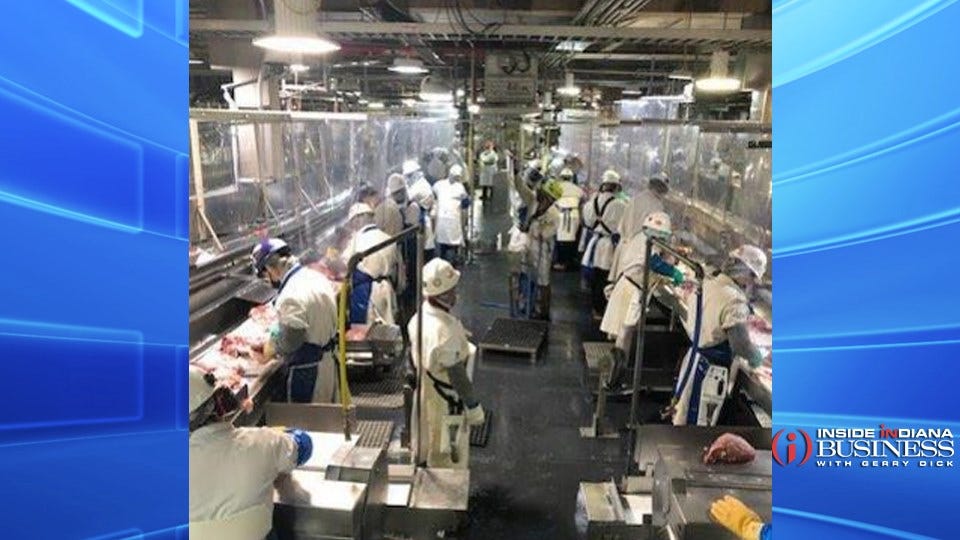Pork Production Struggles for Consumers & Farmers
 Tyson Foods is installing plastic barriers between work stations. (photo courtesy: Tyson Foods)
Tyson Foods is installing plastic barriers between work stations. (photo courtesy: Tyson Foods)
Subscriber Benefit
As a subscriber you can listen to articles at work, in the car, or while you work out. Subscribe NowFaced with concerns about a national meat shortage caused by the COVID-19 pandemic, President Donald Trump is utilizing the Defense Production Act to order meatpacking plants to remain open. Tuesday night, the President signed an executive order, which designates meatpacking plants as critical infrastructure.
“It is important that processors of beef, pork, and poultry in the food supply chain continue operating and fulfilling orders to ensure a continued supply of protein for Americans,” stated the order.
Nearly two dozen meat processing plants across the country, including two major pork processing plants in Indiana, have suspended production because of a large number of workers have tested positive for COVID-19.
“What’s happened in the past few weeks is the meat supply is really under enormous strain and that’s because the closure of the packing plants,” said Jayson Lusk, head of the Department of Agricultural Economics at Purdue University.
Last week, Arkansas-based Tyson Foods Inc. (NYSE: TSN) shut down its plant in Logansport to test its 2,200 workers. Cass County, where the plant is located, has the third-highest number of positive cases of COVID-19 in the state. The Indiana State Department of Health said Tuesday the county has 1,101 cases.
The Indiana Packers Corp., headquartered in Delphi, also suspended operations after a number of workers tested positive.
“Both of those plants together account for 8% of national processing capacity (of pork) from those two Indiana plants alone,” Lusk said. Lusk says the Tyson plant processes 20,000 hogs a day.
On a national scale, 15 of the largest pork processing plants in the country account for 60% of all hogs that get processed.
The agricultural economist said the challenge is not only about plant closures. For plants that remain open, they are running slower production lines, as workers are given more “social distancing.”
“We’re processing nearly 50% fewer hogs than we were on this same day last year,” said Lusk.
“That’s an incredible reduction that’s no doubt going to have serious repercussions on both the farm side and the retail side.”
For pork producers, idled processing plants gives them no place to take market-ready hogs. Lusk said farmers can slow swine’s growth a bit and hold onto hogs for an additional week or two, but at some point, they must get shipped for processing.
“In good and normal times this is a well-orchestrated and coordinated system, but the whole thing has been disrupted,” said Lusk. “Whatever pain we may feel as food consumers It’s much worse for the farmer.”
The U.S. has millions of tons of protein in commercial warehouse freezers. At any one time, the U.S. has approximately 900 million pounds of chicken, 500 million pounds of beef, and 600 million pounds of pork, according to data from the U.S. Department of Agriculture.
“If you look at total weight in cold storage, that’s roughly equal to ten days’ worth of total consumption in the United States,” explained Lusk. “There is some meat in storage, but it’s not unlimited. But it might help cushion against supply shocks.”
Lusk expects consumers will see short-term shortages at grocery stores for meat products until meatpackers are once again fully operational. Even though worried consumers emptied the shelves during the early days of the pandemic, he said there is no reason to worry just yet about a meat shortage.
In an interview with Inside INdiana Business, Purdue agricultural economist Jayson Lusk explains the bottleneck in the pork industry.
